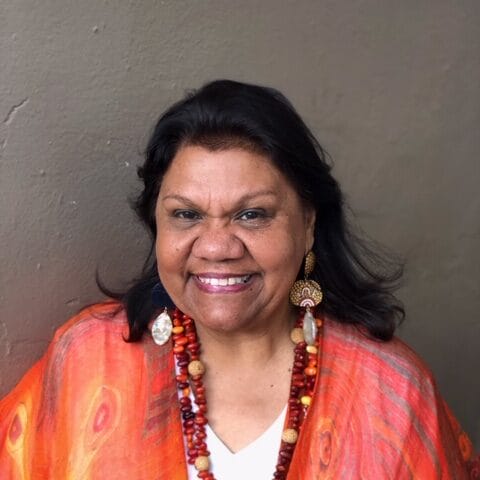This blog is part of our Expert Commentary series, bringing you insights into some of the unspoken challenges people face in the workplace, from experts with lived experience. The series explores a range of topics and perspectives to highlight the ways inclusive and compassionate leadership practices can benefit everyone.
If we are talking about Reconciliation Action Plans (RAPs), it’s always important to begin by acknowledging on whose traditional lands you are living and working on. I wish to acknowledge that I live and work on the lands of the Whadjuk people of the Noongar Nation.Reconciliation Action Plans were originally developed in 2006 and were set up to mark the 40th Anniversary of the 1967 referendum. They began with 8 organisations; today there are approximately 2,000 organisations across Australia with a RAP.Today, a lot of Australian businesses have the desire to genuinely work with Aboriginal and Torres Strait Islander communities and actively want to contribute to Reconciliation in Australia.
Reconciliation is about understanding Australia’s history and the treatment of Indigenous Australians to create a platform for change, and being prepared to hear truth telling from Aboriginal people.
Becoming a supporter of Reconciliation Australia, the Uluru Statement from the Heart, or developing your own RAP all help to build momentum towards a unified country.RAPs are a tool used to address the current inequality between Aboriginal and Torres Strait Islander people and other Australians. RAPs have enabled organisations to sustainably and strategically take meaningful action to advance reconciliation.
Based around the core pillars of relationships, respect and opportunities, RAPs provide tangible and substantive benefits for Aboriginal and Torres Strait Islander peoples, increasing economic equity and supporting First Nations self-determination.
Why is it important that organisations have a Reconciliation Action Plan in place?
I personally find it interesting as to why organisations choose to have a RAP. For most, it’s to gain greater esteem as an employer of choice and build a more dynamic and diverse workforce. There is a desire to enable their staff to develop greater cultural awareness and professional development practices that will strengthen relationships with Aboriginal and Torres Strait Islander stakeholders.Often, Aboriginal job seekers will check if a company has a RAP when they are looking for work. A RAP is an indicator of a culturally safe work environment, and signals that the company is on a journey to breaking down barriers and providing genuine opportunities for Aboriginal employees and businesses. A Reconciliation Action Plan (RAP) is an organisation’s roadmap that guides them on their journey towards contributing to reconciliation in Australia. Each organisation develops their own RAP by stepping through a planning process to identify actions that will support them to enhance relationships, respect and opportunities for First Nations people and communities.
Each Australian business has the potential to use their sphere of influence and take meaningful action to provide tangible and substantive benefits for First Nations people, increasing economic equity and supporting First Nations self-determination.
By deepening their understanding of First Nations people, culture and histories, businesses can achieve a variety of important business goals such as increasing profit by innovating their goods or services, improving their services or demonstrating their commitment to corporate social responsibility.
How do organisations develop a Reconciliation Action Plan?
Before you launch into developing a RAP, it’s a great idea to call Reconciliation Australia and have a yarn with a member of their RAP Team. They’ll help you determine if your business is ready to go on the RAP journey and what your first steps might be. Reconciliation Australia’s RAP framework provides businesses with a range of practical information and resources to develop a plan that will help them translate their excellent intentions into action. It’s a proven approach that has yielded significant gains across Australia. The RAP Program helps advance the five dimensions of reconciliation by supporting organisations to develop respectful relationships and create meaningful opportunities with Aboriginal and Torres Strait Islander peoples. You can work at a pace that suits your business and the environment you operate within.The RAP framework is supported nationwide by First Nations leaders as well as all levels of government and has a robust structure to ensure its success.There have been so many excellent RAPs developed over the years so it’s a good idea to have a look at a few to get ideas about how others have developed theirs particularly companies undertaking similar work. RAP’s can be used as a tick a box exercise.
Unfortunately, some companies use RAPs as a ‘tick box’ initiative to open opportunities for grants and tenders. These companies are in it for the wrong reasons. Other companies will go out of their way to invest in Aboriginal art, but without an active RAP this is a tokenistic action to take. RAPs are a year-round commitment, not a document to dust off during NAIDOC week or National Reconciliation Week. RAPs are limited in what they can achieve and a major issue with them is that they fail to deliver a real impact to help close the disparity gaps between Aboriginal and Torres Strait Islander people and other Australians.
Do you have any tips on creating a successful Reconciliation Action Plan?
To ensure your RAP gains the support and momentum it needs to succeed, it’s important to have key support from the top down. The CEO and executive team need to actively support and implement it. They should be RAP champions and active members of RAP committees. It’s also important to engage with relevant internal and external stakeholders. You can do this by conducting consultation to deepen your understanding of your own team, and the unique barriers and opportunities that lay ahead. Lastly, it’s important that employees within your organisation are aware of your RAP and the RAP initiatives. It should be promoted as a key document to drive positive change in the organisation. It is vital to ensure that your RAP reflects the voices and needs of all relevant stakeholders. Remember, these are just goals. Without a real and tangible programme and approach to reconciliation, you will achieve nothing more than good intentions and no action.
Christine Ross is an Arrernte/Kaytetye desert woman who was born in Alice Springs and grew up in Darwin. Christine has spent over 30 years working at a high level advising both Territory/ State and Commonwealth Governments on a range of issues relating to Aboriginal and Torres Strait Islander people. In 2015, Christine established her own consultancy specialising in Indigenous employment programs, training, mentoring and facilitating Indigenous conferences and forums. She has organised several key events and conferences across Australia to promote Aboriginal and Torres Strait Islander women, including the largest gathering of 700 in Sydney in 2018 to celebrate the NAIDOC theme ‘Because of Her, We Can’. Christine was the former Chairperson and WA Director of the National Aboriginal and Torres Strait Islander Women’s Alliance (NATSIWA) 2017 – 2021.
Women & Leadership Australia is proud to announce that our parent company, Navitas, has launched its first Reconciliation Action Plan (RAP), endorsed by Reconciliation Australia. WLA has championed First Nations leadership for a number of years, through grants programs, engaging First Nations women as speakers and consultants and hosting specialist events for First Nations women. This ‘Reflect’ RAP gives us a path to move forward with reconciliation plans focused on women and leadership.




